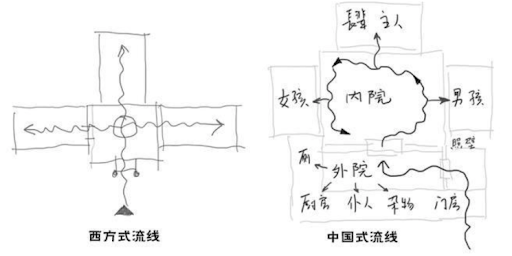UNIT 1 第一单元
6. 社区学习体验-与中国朋友面对面
1st CBEL
1st CBEL Interactive Task
社区体验学习
1st CBEL meeting 第一次跟北京中国朋友见面
1st English Reflections
时间: 与中国朋友讨论后决定
地点: ZOOM (UVA student access)
HOW TO & GRADE
BEFORE the ZOOM meeting
Email your Chinese friend to set up a meeting time.
DURING the ZOOM meeting
The meeting is 1 hour. Feel free to extend it further if you see fit.
AFTER the ZOOM meeting
Complete the following tasks by the Due Date
1. A. 12 pts.
Submit a typed Essay and a self-reflection in English(150-200 words) to your Google folder
Version 1 (due by Due Date): comments received for revision; no score.
Version 2 on Ebook (due by Due Date): a score to be given to your resubmitted essay.
2. 2 pt. (completion grade)
Post the recorded ZOOM video to the designated Google sheet.
Write your self-reflection after completing the first version of the CBEL-typed essay in the same file.
TIP 1: Before the CBEL meeting, go through the handwritten post-task essays with important content to complete each CBEL meeting with your Chinese friend.
WHY? The content of the post-tasks you have written is a solid foundation based on which you can express ideas more fluently, expand further with additional questions relevant to the content, and gather interesting and different perspectives at the meeting.
TIP 2: Before the meeting, go through the following discussion questions, prepare your oral answers to each question, and draft additional questions that you would like to ask your Chinese friend.
WHY? Pre-meeting preparation is key to frequent and quality interaction between you and your Chinese friend at the CBEL meeting.
TIP 3: During the meeting, ask your Chinese friend to provide feedback and assistance in helping you use the language accurately.
WHY? Your CBEL Chinese friend is a graduate student in a top-ranking MA program in teaching Chinese as a foreign language in China. She is eager to help you and learn to be a prospective Chinese language teacher. She is your Chinese friend and tutor. 她是你北京的中国国朋友,也是你的中文助教。
DISCUSSION QUESTIONS 讨论问题
PART 1: 介绍自己,认识北京的中国朋友
PART 2: 与你的中国朋友分享(fen1xiang3 =share)你在北京两周的体验,并写下他们的看法与观点。
1. 我这两周做了什么?有什么感受?心情怎么样?
2. 用下面的词,告诉你的中国朋友,什么是四合院?
坐北朝南 东南方 八卦 巽位 = 风位,紫气东来 寓意 象征 吉祥平安
3. 介绍我们住的四合院,并说一说为什么你们选择这个四合院。
(Remember to show the 四合院photos on the screen, so your Beijing Chinese friend knows exactly where you live)
4. 讨论四合院的建筑设计特色,再谈一谈四合院与公寓的差异/差别(=不同=不同点):你跟你的中国朋友都赞成(zan4cheng2=同意)以下的说法吗?说说你们的看法。
a. 中国四合院与美国的公寓、房子体现(了)两种文化,两种思维(si1wei2)方式差别/差异,各有所长,并无优劣之分。
b. 中国传统四合院的设计遵循从外到内(里)从高到低的规则,体现男尊女卑长幼有序与主仆关系的思想。
c. 其他问题
*以下是我们出发以前讨论过的五个优点与图示[1]:
5.大兴机场为什么被誉为“世界新七大奇迹?跟别的机场有什么不同?介绍大兴机场让你印象最深刻的地方。
PART II: 1st English Self-reflection (about 100-150words)
Congratulations! Cannot believe that we have come such a long way after launching a per-class social hour!
我们在牛年的最后几天坐飞机到北京,现在准备在北京过虎年了!
Before departure, we discussed the traditional and modern architectural design of 四合院and decided to live in 单层现代四合院。 Besides, we explored many aspects of Daxing Airport. In the 2-week virtual journey, what are the highlights? Which parts did you enjoy the most? Do you feel that discussions in core-tasks enhance peer interaction and engagement? Write down all that you feel interested in and impressed for the outset of the journey in Beijing. This will be the first self-reflection of your E-book.
CBEL Essay Grading Criteria

On Day 1, Day 2, and Day 3, you will have handwritten short essays to capture your fresh memory right after the virtual journey. The Task-In-Action integrates the 3 post-handwritten essays in a creative way to immerse you in an authentic learning setting. These will prepare you to converse with your Chinese friend to discuss more deeply and gather their interesting and perhaps different perspectives for comparison. All these steps will prepare you to successfully complete the extended typed journey that is expected to be well-organized, coherent, and elaborated with detailed information and satisfactory language use.
Organization (3 paragraphs required)
The first Paragraph: Beginning with a brief intro.
This week, I……, topic sentence
The second paragraph: Middle Core with a detailed description
See 1 & 2 in “Content”
The third paragraph: Closing with concluding remarks
See 3 in “Content”
Content & Information
Each CEL essay has a set of discussion questions in alignment with the content of each unit.
The 6 CBEL meetings and essays have different foci on specific language functions and topics. Please refer to the specific task and discussion questions of each unit.
Length & Number of Characters
Submission & Resubmission
First submission
You will receive comments to fine tune and enrich your first submission– NOT graded.
Second submission (required)
Revise the first submission and resubmit to get a final grade that makes you feel a sense of achievement – SMILE! 😊
The resubmission process is to honor your extra effort and give you well-deserved credit.
Failure to submit on time results in 1 point deduction to a final grade of the resubmitted journal entry.
Grading Criteria (12%)
1 Organization, Length, and Format (2 pt.)
Three Paragraphs required: beginning, middle, and conclusion
A minimum of 500 typed characters
Number of characters indicated at the end of the journal entry
2 Content & Information (2 pts.)
A wealth of information
Detailed description
Elaborate ideas and thoughts
Comments, feelings, and reflections
3 Language Use (8 pts.)
Rich vocabulary and idiomatic expressions (learned inside the class)
A variety of structures (learned inside the class)
Take risks to incorporate self-acquired vocabulary (new outside of class)
4 Timely submission (point deduction)
Due by a due day in the Google folder.
1-point deduction for late submission applicable to 1st and 2nd submission respectively
- Sources from https://kknews.cc/zh-cn/history/k8bq5rb.html ↵






